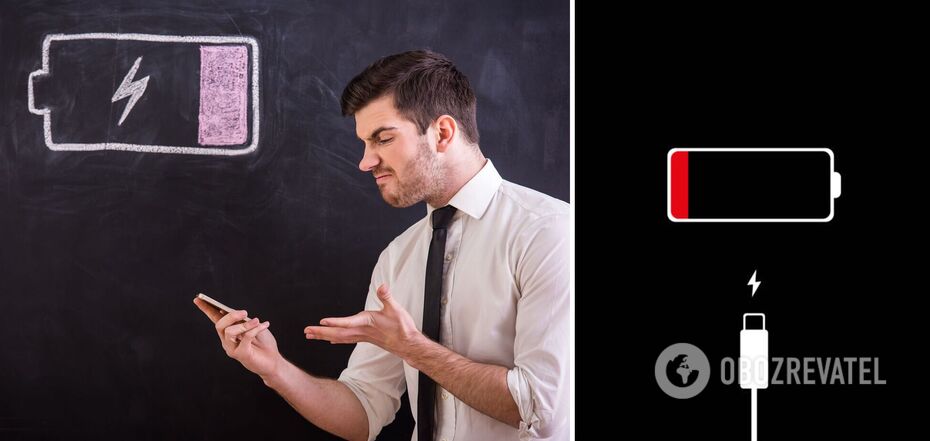Life
How to improve battery performance in an Android smartphone: top 6 tips
In recent years, smartphones based on the Android operating system have taken a big step forward, as has the OS itself. What makes it popular, of course, is that Android is the base for dozens of smartphone manufacturers, which allows users to choose exactly the gadget they have been dreaming of and at the desired price. Equally important is the huge number of free apps that can be installed on the OS.
However, while the overall power of smartphones and the Android OS itself is growing, there remains a weak link in the form of the battery of the gadget. After all, few modern smartphones can boast the battery life available in cell phones a decade ago.
Of course, the huge screens and technology, of which you could only dream before, hardly allow the smartphone to have battery life of 7-10 days, but users can still help themselves so that the battery does not run out before their eyes. OBOZREVATEL tells how this can be achieved.
Remove branded junk
Almost all popular Android smartphone brands abuse the openness of the operating system by creating clones of existing programs with their own twist. In most cases, users never even open them, using the standard Android features. Nevertheless, these apps still remain installed on the smartphone, taking up space as well as draining the battery with background updates and improvements.
So the obvious solution would be to go into settings and delete all that junk. Yes, unfortunately, it is simply impossible to delete all of them, because the developers have not provided such a function. But you can still limit the background updates.
Another trouble with smartphones is partner apps like Microsoft Office, PowerPoint, Excel and OneDrive. Think back to how many times you've opened any of them at all? A similar thing happens with the overly intrusive integration of services from Meta: we are talking about Facebook, Services, App Installer, and Meta App Manager. Any one of them can safely be thrown out. Yes, even Facebook, which has long been known to be voracious to the battery. Instead, it is better to use Facebook Lite or access the social network through the browser.
To clear your smartphone of garbage, open Settings and go to the Programs submenu. Next, uninstall or turn off anything you don't need.
Get rid of various Battery Saver
Unfortunately, most third-party applications that promise to optimize your battery life will only give you pretty animations that make you look like you're actively using them. No matter how much you want them to, 99% of these programs do not optimize battery use in any way.
Yes, such applications can disable programs running in the background. But this is only a temporary action. You can disable the background update completely on your own.
Besides, you shouldn't be surprised, during their work such applications only drain the battery themselves.
Use optimized apps
If you are interested in a third-party application that might be useful, be sure to check its system data to see if it supports your smartphone and is optimized for your version of the Android OS.
If not, try to find a similar application from another developer that will work better on your smartphone and won't drain your battery.
Update your Android
If your smartphone manufacturer is in the process of supporting your smartphone and releasing an OS update, never give up on installing it.
An Android update always means that the system will run more stable and consume less current from the battery. Third-party apps may also start working better after an OS update.
If your manufacturer no longer updates Android, just get over it and follow the other tips.
Use Wi-Fi instead of mobile internet
Yes, it's probably more convenient to turn on the mobile Internet and be online wherever it's convenient for you. But the mobile network is very bad for the battery itself, and when you turn on the mobile Internet, it only gets worse. That's why it's best to use free Wi-Fi where it's available.
But there's a "but" here, too. Keeping Wi-Fi on while you're outdoors isn't the best idea either, as your smartphone will constantly try to find a free network and connect to it.
That's why you should only turn on Wi-Fi outdoors when you need the internet. Or at least where you know for sure that there is a free network.
Turn off unnecessary features
As years ago, the advice to turn on only when using Bluetooth, NFC, location, mobile Internet, and hotspot remains valid.
You don't have to turn them all off at once. For starters, turn off a few of them and assess how it affected the battery. In the meantime, you'll see if you really need these features always on.
Previously OBOZREVATEL also told about the golden rule of charging for all smartphones.
Subscribe to OBOZREVATEL channels in Telegram and Viber to keep up to date.



























